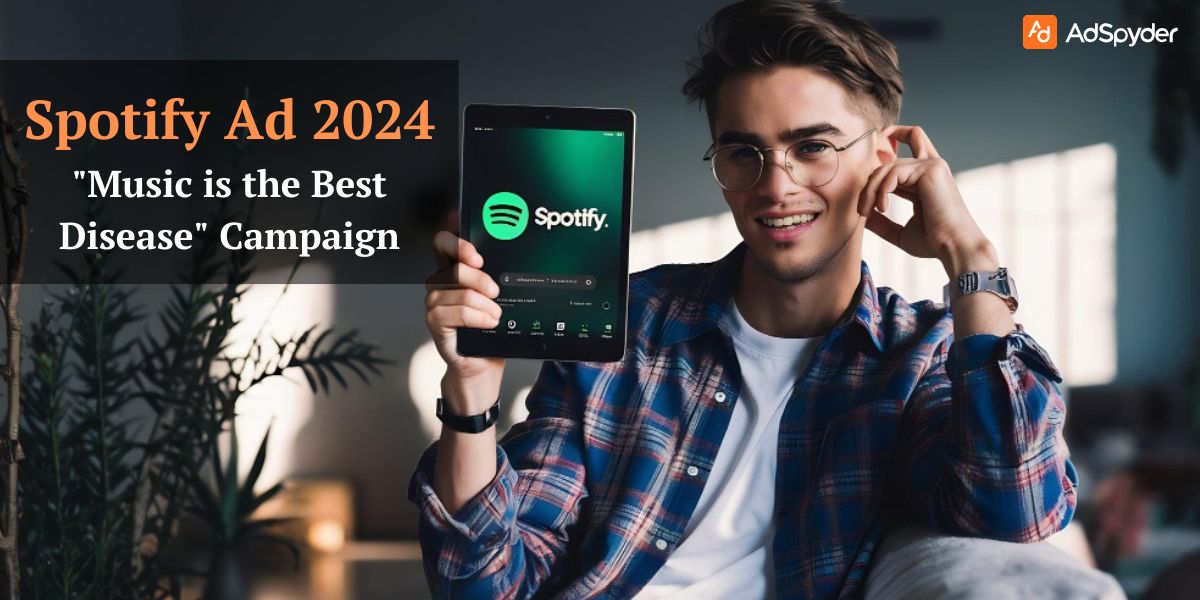The use of personalization has grown to become one of the most vital aspects in any marketing campaign. The consumers want an experience that best fits their individual needs and preferences. Individualization in video marketing does not stop at saying ‘Hello John,’ it is about producing content that will make John feel understood and lead to increased viewability and conversion. This blog will cover different ways of personalization in Video Marketing and look into the technologies and strategies that companies can use to bring personalization to their videos.
Ready to Elevate your Marketing Strategy?
Summary
This blog will cover:
- Why it is crucial to use personalization in video marketing.
- Ways of producing videos for the target audience: segmentation, dynamic content, interactive elements, video in emails, video storytelling, and retargeting.
- The tools and technologies for video personalization include Video Personalization Platforms, Data Integration and Analytics, Artificial Intelligence and machine learning, Personalized video templates, Automation tools.
- This article provides a list of Frequently Asked Questions about personalized video marketing.
At the end of this blog, you will grasp how personalization can be used in your video marketing strategies to increase viewer engagement and fulfill your business objectives.
Techniques for Creating Personalized Video Content
Understanding Your Audience
The first step in the overall process of personalization is comprehension of the target audience. This involves:
- Audience Segmentation: It is crucial to classify your audience into categories on the basis of demographic characteristics, activities, and preferences. It is useful especially in ensuring that the content produced meets the needs of the segments.
- Gathering Data: Collect information on audiences’ preferences and actions by applying tools like Google Analytics, CRM platforms, and social media analytics.
- Creating Buyer Personas: Elaborate clear and specific profiles regarding your target audience of customers. Such personas should comprise demographic data, interest, pain, and buying habits.
Dynamic Content Personalization
This personalization of dynamic content in videos can be in the inclusion of personalized elements that identify a viewer by his name and location, such as:
- Name and Location: Address the viewer by calling his name or his location, or any other identifiable information incorporated into the video. In such a way, the content would appear more personalized and addressed to each individual.
- Preferences and Behaviors: Draw data from the audience regarding the genre of video watched; this should help feed into a system that can come up with personalized videos. For example, if the viewer liked a certain product, then the clip needs to be about that specific product.
- Examples: a fitness brand may create workout videos, considering the level and objectives of exercise by a user; a travel company – travel guides depending on previous travel experience of the viewer.
Interactive Video Features
Engaging videos are those that allow viewers to participate in the content. Techniques include the following:
- Quizzes and Polls: Add quizzes and polls to your video to keep viewers engaged and gather data on their preferences.
- Clickable Links: Adding clickable links within the video that leads to more information or even additional products.
- Benefits include that interactive videos raise the ante with regard to viewer engagement and provide more information on which further personalization can be based.
Personalized Video Emails
The utilization of personalized video emails has the potential to highly increase engagement and conversion. Techniques include:
- Creating Personalized Video Emails: You can also try BombBomb, Vidyard, or Wistia to record and send videos to specific recipients via email. These allow for integrating videos right into the body of the email.
- Techniques: Greet the viewer by their name, tell them about the previous interactions you had with them, and show them some content relevant to their interests.
- Tools: Track the performance of your personalized video emails using automated tools such as Mailchimp or HubSpot to monitor engagement rates.
Storytelling and Personalization
Storytelling paired with personalization is a very strong marketing tool used in the company. Techniques include:
- Crafting Personalized Narratives: An analysis of the programmes should be made to develop stories that appeal to individual viewers through the inclusion of individualistic aspects. For instance, use information at the disposal of the viewer such as areas of interest to come up with a storyline that the viewer will find appealing.
- Examples: An application for financial services could design a narrative video which shows milestones of a user only based on his/her financial status and investment preferences. ‘
Retargeting with Personalized Videos
Retargeting is based on the concept of presenting videos that are tailored to specifically target users who have already had an initial encounter with the particular brand. Techniques include:
- Creating Retargeting Videos: Small businesses should design and upload the retargeting videos to the available platforms such as Facebook Ads, Google Ads, or AdRoll.
- Addressing Viewer Interests: Web-viewable retargeting videos tailored to the interests of the viewers, where the individual’s browsing history with your company can be detected, including products they have looked at or pages that they have visited.
- Benefits: Many potential buyers are concerned with privacy issues and will not click on the ad even if it evokes curiosity, while retargeting videos will lead to higher conversion, especially if it is personal and resonates with the viewer.
Tools and Technologies for Video Personalization
Video Personalization Platforms
Several platforms offer robust features for creating personalized video content:
- Vidyard: Vidyard brings features for creating and sharing videos that are capable of personalizing a video across a large number of users. This incorporates CRM platforms and marketing automation tools to provide personalized content.
- Wistia: Wistia comprises tools for crafting unique watching experiences like video embedding tools as well as player customization and analytics.
- Vyond: Vyond can be used to create animated videos that are accompanied by custom components. Further, it is appropriate for development of animated explainer videos and tutorials.
Data Integration and Analytics
Integrating data from various sources is crucial for effective personalization:
- CRM Systems: Use that data from such CRM sources as Salesforce or HubSpot to tailor the videos to a client’s activities and interests.
- Email Marketing Platforms: Leverage the insights from the email marketing service and integrate them when sending video emails.
- Social Media: Watch the social media to get viewers’ behaviors and preferences regarding the videos produced, so as to customize the videos.
AI and Machine Learning in Video Personalization
AI and machine learning technologies enhance video personalization by analyzing large datasets and identifying patterns:
- AI-Driven Personalization: Automatically produce videos based on viewers data with the help of new artificial intelligence. For example, the application of AI may include recommending the scenes of videos depending on the user’s previous actions.
- Examples: Champion SundaySky and Spirable are two different platforms that employ AI to generate engaging videos, which are personalized based on the preferences of the viewer.
- Future Trends: AI and machine learning will also remain on the rise and offer even more advanced technologies as far as targeting videos to specific audiences is concerned.
- Using video marketing non-profits can effectively share their mission, engage supporters, and inspire donations through impactful storytelling and emotional connections
Personalized Video Templates
Video templates make personalization so much easier.
- Benefits: In fact, there are three advantages of this: saving time, maintaining brand consistency, and the ease with which the material can be personalized to incorporate personalized elements.
- Personalization: Through templates, one can generate customized videos with viewer-specific information like names, places, and preferences.
- Platforms: These are like Canva, Animoto, and Adobe Spark, among other video templates one could use for personal video marketing.
Automation Tools for Personalized Videos
Automation tools help to simplify the process of creating and sharing videos in a short time, so this way you can share the utmost amount of videos with specific audiences.
- Benefits: Through automation, there is more productivity, less manual labor, and less variation in delivery of personalization videos.
- Examples: Some of the automation options include HubSpot, Marketo, and ActiveCampaign that have a personal video marketing section and the functionality of a workflow, trigger, and segments.
FAQs
What is personalized video marketing? Why is it important?
Personalized video marketing involves putting together a video marketing campaign to deliver unique videos to the consumers. This is based on their specific behaviors or their past interactions with the company. It is crucial since it increases viewers’ interest in content and helps increase the conversion rates. It also generates brand loyalty.
How can I gather the necessary data to create personalized video content?
Get the information from the web links and analytics, CRMs, social platforms. You also can use email marketing suppliers and direct customer communications. Utilize this information to further classify your audience, and establish concrete buyer profiles for more targeted personalization.
What are the most effective techniques for personalizing video content?
Use dynamic content (such as including names and locations). Using tests and polls, quizzes, and clickable links, personalized video email marketing are some other examples.
How can I measure the effectiveness of my personalized video marketing campaigns?
Use key statistics like view count, engagement rate, likes, comments, shares, click through rate (CTR), conversion rate and ROI.
What are some common challenges in creating personalized videos? How can I overcome them?
Data amalgamation, expansiveness, and compliance with privacy regulations are some challenges. To overcome them, use efficient data integration mechanisms. Use process automation and best practices that will respect conditions provided by acts like GDPR and CCPA.
How can I ensure that my personalized videos comply with privacy regulations?
Always get permission to collect and use users’ data. Make it easy for users to understand how their data would be used. Ensure the option of opting out of use is available. Make sure that you check your privacy policies periodically.
Conclusion
Recap:
The use of personalization in video marketing is a great tactic. It aids in engagement, conversion, and loyalty. It also improves the overall value of the communication with customers. Through strategies such as dynamic content,video emails, narrative, retargeting, businesses can deliver content that makes an impact in the life of a specific person.
Final Thoughts:
Personalized video marketing is not just about recording and sharing the videos. It needs a lot of planning along with the selection of the right tools. It is crucial that you apply the ideas and strategies covered in this blog to improve your video marketing practice and obtain your business objectives.
Call to Action:
We recommend that you begin implementing personalization across your videos. This is to add value to your video marketing plan.




